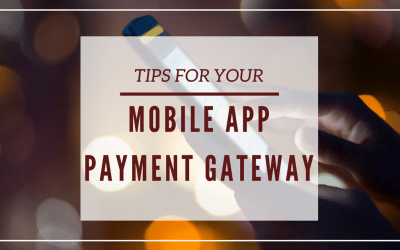hat is a Chargeback Dispute?
When a customer holding a Mastercard disputes a transaction, you enter into what is known as the chargeback dispute process.
Why do customers dispute transactions?
There are many reasons a customer may dispute a transaction, including undelivered goods or services, dissatisfaction, or a variety of other valid reasons.
As soon as a chargeback is filed, you enter a resolution process that goes through three cycles. Here are the three cycles that must be carried out before a dispute reaches arbitration:
Three Cycles for Mastercard Chargeback Resolution
Cycle #1
First chargeback: Your business enters the first cycle of chargeback resolution as soon as a customer holding a Mastercard disputes a transaction.
Cycle #2
Second presentment: The following cycle of chargeback resolution occurs when the acquirer refutes the issuer’s first chargeback.
Cycle #3
Arbitration chargeback: This stage is when the evidence provided by the acquirer in the second presentment is deemed insufficient.
Yet the chargeback process is being overhauled! Mastercard is now making significant efforts to streamline and modernize the entire chargeback process.
If you have heard rumblings about the Mastercard Dispute Resolution Initiative (or MDRI), it’s true! Mastercard is overhauling its entire payments ecosystem, and the changes will be rolled out in four distinct phases.
Here’s How MasterCard’s Dispute Resolution Process is Changing
Chargebacks were initially introduced 45 years ago when credit cards were still novel and unknown.
Consumers were comforted by the fact that they could dispute transactions or reclaim lost funds due to fraud. While Mastercard’s chargeback processes made sense 45 years ago, they haven’t kept up with the digital world we live in today.
That’s why Mastercard is now attempting to make the chargeback process more fair and responsive to the online landscape.
What are Mastercard’s goals with MDRI?
Get faster and more accurate dispute outcomes
Regularly make changes that can be easily adapted to new trends in technology and fraud
Allow for greater compliance and stability with a gradual and steady rollout.
The MDRI Rollout In 4 Phases
Phase 1: October 12, 2018
Issuers are required to collect more information from cardholders before a chargeback. Collecting relevant information will make it easier to filter out invalid disputes and fight against friendly fraud and cyber-shoplifting.
The change made during phase 1 applies to chargeback disputes listed under these reason codes:
4831 – Incorrect Transaction Amount
4834 – Point of Interaction Error
4853 – Cardholder Disputer
4863 – Cardholder Does Not Recognize
Phase 2: April 12, 2019
This phase addresses unjust enrichment or “double refund”. This happens when the issuer performs a chargeback while a merchant has also issued a credit to the cardholder. In the past, a scenario like this would have been resolved by compliance or pre-compliance case.
Under MDRI, compliance or pre-compliance will no longer be resolving double refund scenarios. It will be the issuer’s responsibility to check for refunds/reversals prior to chargebacks. If submitted as “Credit Processed”, issuers must accept a second presentment.
If you offer a refund after the customer’s bank has filed a chargeback, you will need to accept the dispute. However, if you have offered a refund before a chargeback has been filed, you will have 45 days to contest the dispute.
It’s also important to note that any chargebacks involving Mastercard’s reason code 4834 (Point of Interaction Error) will see the chargeback filing timeframe reduced from 120 days to 90 days.
Finally, Mastercard will eliminate the following two reason codes from their list:
4840 – Fraudulent Processing of Transactions
4863 – Cardholder Does Not Recognize (to be removed tentatively on Jul 12, 2019)
Phase 3: October 18, 2019
Mastercard hasn’t yet announced the changes for this third phase of the rollout. Stay tuned for more updates.
Phase 4: April 17, 2020
During this fourth and final phase of the MDRI rollout, the arbitration chargeback cycle will be removed. This is an effort to streamline the chargeback process and allow issuers to continue a dispute with pre-arbitration prior to escalating to arbitration for fraud.
The changes in this fourth phase do not apply to the following reason codes:
4870 – Chip Liability Shift
4871 – Chip/Pin Liability Shift
4808 – Authorization-Related Chargeback
Now, you might be wondering…
How Does MDRI Overlap With The Most Recent Version of the Chargeback Guide?
You may have already reviewed the most recent version of the Chargeback Guide issued by Mastercard on Dec 13, 2018. Because the first phase of MDRI went into effect on October 12, 2018, you will note that some of the changes were included in the guide.
Here are some important details to note from the guide:
When it comes to resolving a chargeback with reason code 487 (No Cardholder Authorisation), you are not allowed to submit any new information like name, location or date. This change applies if the information doesn’t match between authorization and clearing.
Please note that the changes that were set for late presentments have been withdrawn.
Additionally, you are also required to provide supporting documentation like a transcript of emails with your customer for chargeback reason code 4863 (Cardholder Does Not Recognize).
Do You Have Any Questions About How MDRI Will Impact Your Business?
Most businesses have limited time, resources and expertise to stay on top of MDRI updates and the various ways it will affect their business.
Get in touch with us right away for expert guidance in navigating Mastercard’s evolving chargeback process.









